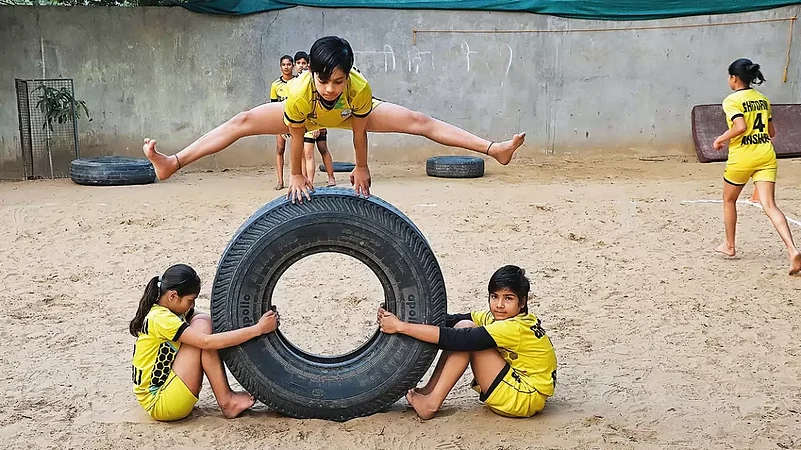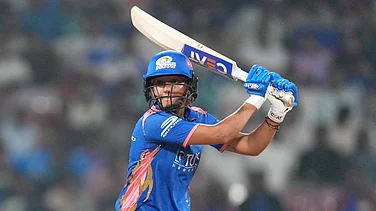Along the Delhi Mehrauli–Gurgaon Road and close to a metro station lies Ghitorni village, encircled by a rapidly expanding urban sprawl, with a population of around 15,500, according to the 2011 Census. Caught between the encroaching modernity of urban life and the embedded tradition of Indian villages, Ghitorni’s youth—both boys and girls—have found expression in their village’s sole gym, where physical exercise and kabaddi are their way of hanging out.
Delhi’s urban villages are little pockets seemingly abandoned by the tell-tale signs of “development”. Streets are narrow, with drains overflowing on to them. In the cheek-by-jowl existence, there is no space for government parks or playgrounds. Caught in the vortex of fast-paced life, fearful parents were initially reluctant to let their children, especially girls, to play kabaddi. Barring Gulab Singh Gurjar, who decided to encourage his daughter, Nisha, now 12 years old and studying in Class VIII, to go out and exercise and play. And the carefree Nisha grabbed this opportunity with both hands. Playing kabaddi not only meant staying physically fit but also mentally agile. And, without aspiring to it, she became an inspiration for socres of girls of her village.



There is, of course, more to the story. When she began playing kabaddi, she was the sole girl among boys. And as boys are wont, they made it a habit of discouraging her by making fun of her long hair and telling her it’s a boy’s sport. But what they hadn’t expected was that by then kabaddi had become Nisha’s passion. She trimmed her hair to compete on an equal footing with boys. With that, her belief in the parity of the sexes has strengthened. She says, “When I began playing, I felt my long hair was an obstruction. So I had it trimmed. Friends and relatives started taunting me and my mother.” All it did was raise Nisha’s determination.
Soon, other girls of the village began to follow in her footsteps, after completing household chores and studies, of course. This is still India, after all. A regular at the kabaddi court and gym is her elder sister Jyoti Gurjar, 15, who is in Class X. Says Jyoti, “Since I began playing kabaddi and exercising, I started feeling different from other girls in school. My body completely changed.” Actually, with better stamina and strength, she has become the cynosure of all eyes.



Behind their success, is the protective cover of their doting father, Gulab Singh. “I never stopped them from doing anything. When Jyoti wanted to learn riding the motorbike, I taught her myself.” He intends to get her a driving licence when she turns 18, exactly the way he had done for his son when he turned 18. Because, according to him, there’s no difference between girls and boys.
Kamla, their proud mother, also believes in the same philosophy. Together, the family stands apart from the rest of the village—where belief in girls as a burden, fit only for household chores and not needing schooling—is still rife. By contrast, Jyoti and Nisha say with determination that girls are not weaker than boys. They are equal. With their family firmly behind them, the girls now hope to don the India jersey in kabaddi.
More power to them!
Text and photographs by Suresh K. Pandey

























